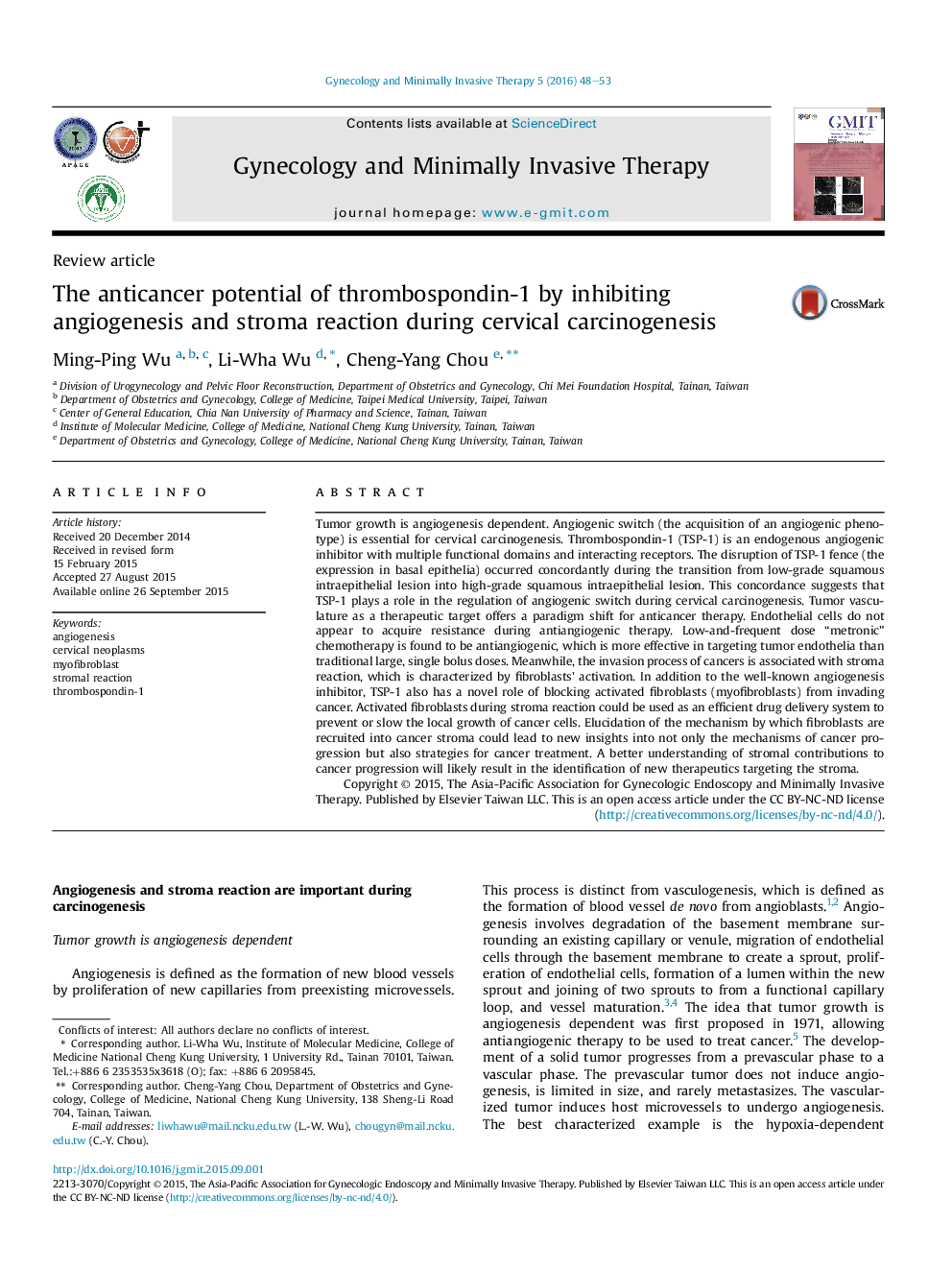| کد مقاله | کد نشریه | سال انتشار | مقاله انگلیسی | نسخه تمام متن |
|---|---|---|---|---|
| 3951840 | 1254896 | 2016 | 6 صفحه PDF | دانلود رایگان |
Tumor growth is angiogenesis dependent. Angiogenic switch (the acquisition of an angiogenic phenotype) is essential for cervical carcinogenesis. Thrombospondin-1 (TSP-1) is an endogenous angiogenic inhibitor with multiple functional domains and interacting receptors. The disruption of TSP-1 fence (the expression in basal epithelia) occurred concordantly during the transition from low-grade squamous intraepithelial lesion into high-grade squamous intraepithelial lesion. This concordance suggests that TSP-1 plays a role in the regulation of angiogenic switch during cervical carcinogenesis. Tumor vasculature as a therapeutic target offers a paradigm shift for anticancer therapy. Endothelial cells do not appear to acquire resistance during antiangiogenic therapy. Low-and-frequent dose “metronic” chemotherapy is found to be antiangiogenic, which is more effective in targeting tumor endothelia than traditional large, single bolus doses. Meanwhile, the invasion process of cancers is associated with stroma reaction, which is characterized by fibroblasts' activation. In addition to the well-known angiogenesis inhibitor, TSP-1 also has a novel role of blocking activated fibroblasts (myofibroblasts) from invading cancer. Activated fibroblasts during stroma reaction could be used as an efficient drug delivery system to prevent or slow the local growth of cancer cells. Elucidation of the mechanism by which fibroblasts are recruited into cancer stroma could lead to new insights into not only the mechanisms of cancer progression but also strategies for cancer treatment. A better understanding of stromal contributions to cancer progression will likely result in the identification of new therapeutics targeting the stroma.
Journal: Gynecology and Minimally Invasive Therapy - Volume 5, Issue 2, May 2016, Pages 48–53
